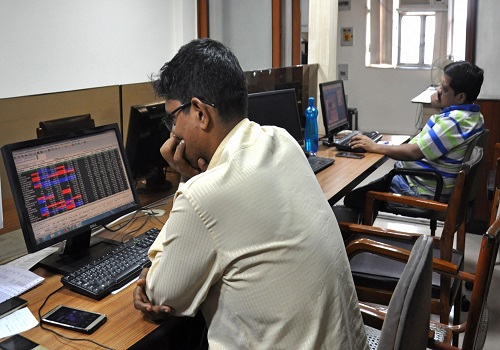Market Outlook Research Note By Sumit Jain, ASK Investment Managers

Follow us Now on Telegram ! Get daily 10 - 12 important updates on Business, Finance and Investment. Join our Telegram Channel
Below The Market Outlook research note Sumit Jain, Deputy CIO, ASK Investment Managers.
The month of October was bogged down by multiple headwinds globally as the world witnessed the emergence of yet another conflict arising out of the Middle East. Post the negative impacts ravaging the World economies due to the ongoing war between Russia and Ukraine, a start of another conflict can have a contagion effect. Amidst these escalating geo-political tensions, IMF released the revised expected growth rate in its October’23 World Economic Outlook. The major excerpts include:
• India’s growth forecast for 2023 was increased by 20 bps to 6.3%.
• United States’ growth forecast for 2023 was increased by 30 bps to 2.1% and that for 2024 was increased by 50 bps to 1.5%.
• China’s 2023 growth forecast was reduced by 20 bps to 5.0% and that of 2024 was decreased by 30 bps to 4.2%.
• EU’s growth rate was also revised downwards for both 2023 and 2024.
• The world’s growth forecast for 2023 has remained constant at 3.0% and revised downwards for 2024 to 2.9%.
The upward revision of India’s growth rate was based on growth of manufacturing and consumption showcased in the last 9 months of this year, along with strong expectations from festive season. Currently, festive season has started off well. Online sales have bounced strongly.
However, one need to take the current global forecasts of IMF, with a pinch of salt, as these are based on views prior to the outbreak of Israel-Palestine War, which has increased the global risk. The contagion effect of the war, if it persists, may spillover past the Middle East region and the intensity will increase if other countries join the conflict. As a fall out of this, inflation may remain high and sticky.
The record debt levels globally clubbed with high interest rates, puts the global Governments’ borrowing costs and capability in limelight. Post a minor drop in global debt levels in 2022, it has started rising in 2023, and most of the increment came from developed countries. The debt ceiling crisis in the US continues with conflict between Republicans and Democrats rising in relation to the US funding Ukraine in the ongoing war at a time when its own debt levels are at all-time high. In Europe, countries like Italy and Britain are also undergoing pressure of rising debt and it has become a cause of concern. The question is not in relation to the repayment of huge debts accumulated by these developed nations, but the effects on fiscal policies that they would be forced to undertake to fund these debts. With interest rates at elevated levels, the fiscal deficit of these nations will be under stress. The spillover effect of that on all the economies around the world will unfold with time.
On the other hand, developing nations like India are in a better position with comparatively much lesser external debt, which brings a lot more stability for them as developed economies face uncertainty. In terms of inflation as well, India is very well poised compared to their developed counter parts who are struggling to get it within tolerable limits.
An important event during the month has been the rapid ascent of the US Treasury, unsettling investors globally. The benchmark 10-year yields have surged from 3.3% in April 2023 to around 5%. This is the highest level since the financial crisis in 2007. This sharp rise has been mirrored at the shorter end of the yield curve as well, with 3-month T-bill yields crossing the 5.3% mark and 2-year yields surging to 5.2% from CY23TD low of 3.75% as US treasury bill issuances remain elevated. The surge in US treasury yields has sparked anxiety among investors in recent days raising worries about persistence of tight financial conditions.

Above views are of the author and not of the website kindly read disclaimer












 320-x-100_uti_gold.jpg" alt="Advertisement">
320-x-100_uti_gold.jpg" alt="Advertisement">










